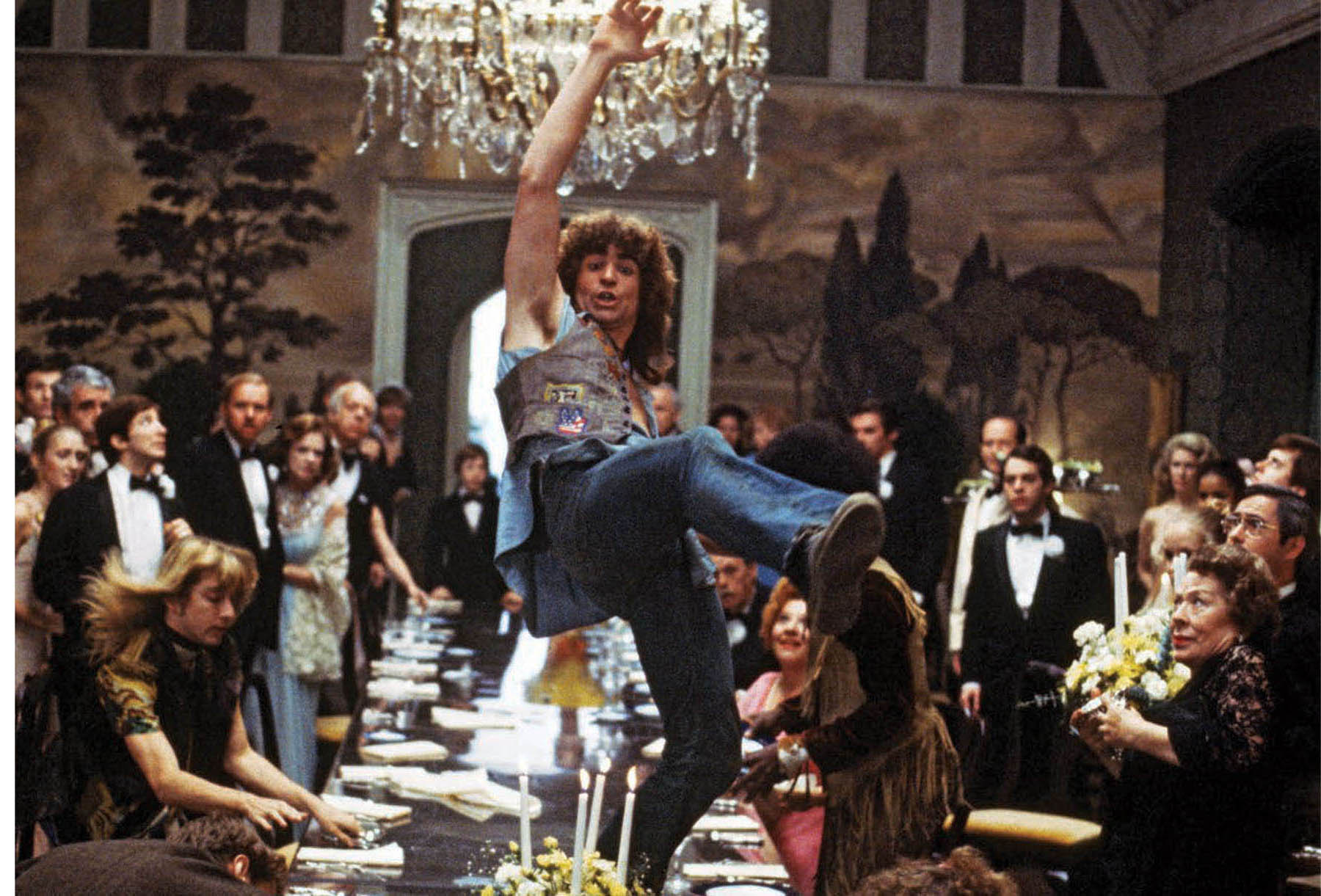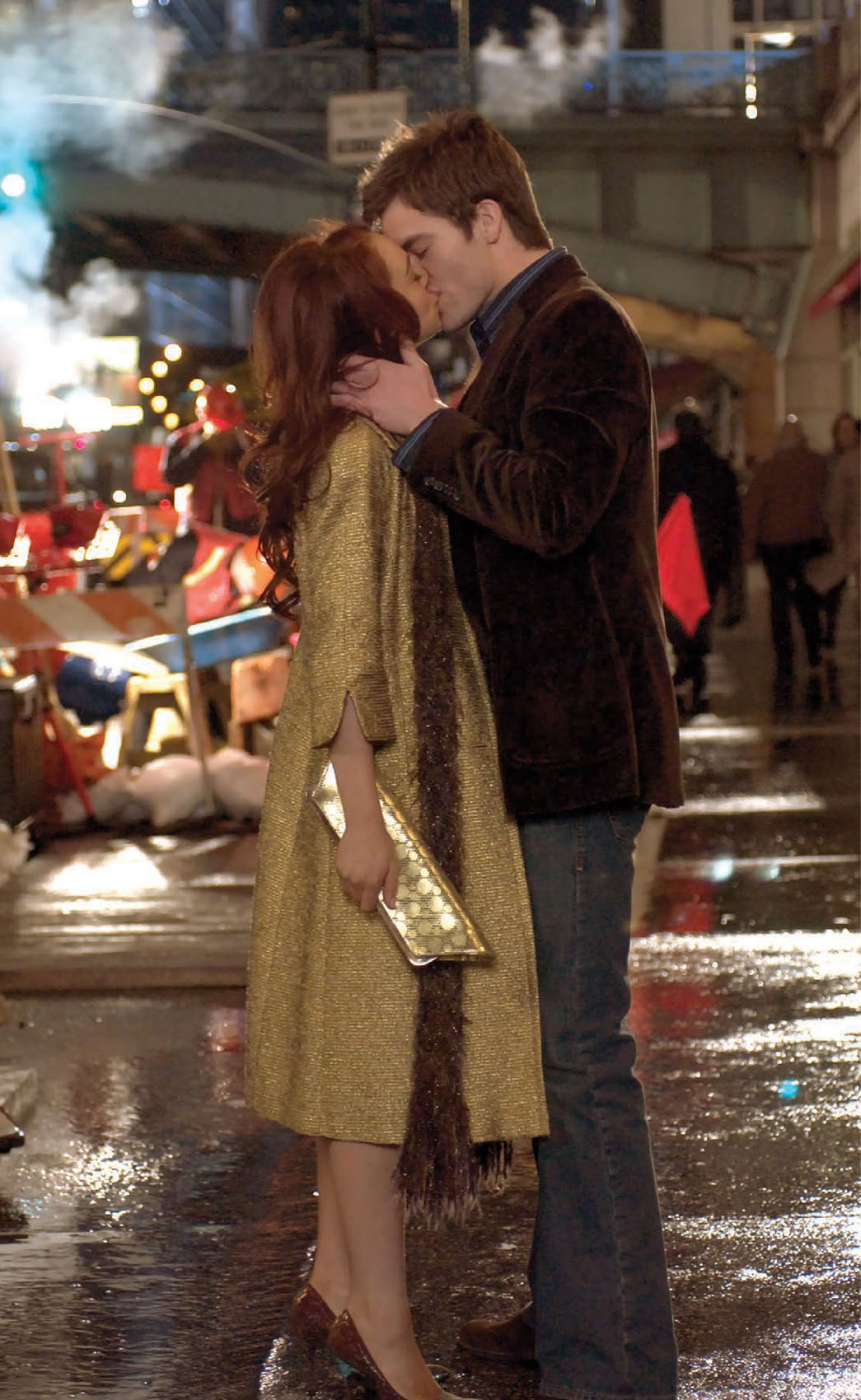Q: How did you become involved in costume design?
A: I grew up on a farm in Swanton, Ohio, which is about twenty miles west of Toledo. Around the time I was nine or ten, I saw a live production of Holiday on Ice. The first “a-ha!” moment was a Scheherazade number. There were eight ladies in sheer pantaloons and each had her own downlight which changed, and the effect of the light on the costumes changed the color. It was magic. Then there was a “Showboat” number, where a paddlewheel steamer rolled out onto the back of the ice, and out of it came the same eight ladies in antebellum dresses that had lights inside them. They floated across the ice and got into position, the house went black, and the lights inside the dresses illuminated as they skated around. I couldn’t believe my eyes.
In high school, I worked on school plays, and I made Roman armor for the Easter morning sunrise service at my church. In college, I started in the economics department, but I had no idea what I was doing in those classes. I met an actor there who told me I should come to the theater department. I went, and never left. After college, I had an offer to assist a designer at the New York Shakespeare Festival. I arrived in New York with $500 in my pocket, and discovered that the man who had offered me the job was in the hospital having the cartilage replaced in both of his knees and wasn’t doing any designing that summer.
I explained what happened to a friend of mine. The friend said, “Come to dinner tonight, there is someone I want you to meet.” That person was screenwriter Anita Loos. She said to me, “I know exactly who you should meet, and I’ll make arrangements.” She sent me to Stanley Simmons, who designed costumes for ballet and theater. Stanley arranged for me to meet Milo Morrow, who was the head of the costume design shop for the New York Shakespeare Festival. He took me on as an apprentice for $35 a week. The very first costume I made was for Judy Collins, who was playing opposite Stacy Keach in Peer Gynt (1969). Raul Julia, James Earl Jones, and Estelle Parsons were there. It was an extraordinary time, and I worked there for almost ten years. After working with Theoni Aldredge on the Shakespeare Festival’s original production of A Chorus Line (1975), I went to work at Barbara Matera Ltd.
Years later, I sent a letter to Anita Loos and told her that she had been the raison d’être for the “whole mess.” I think she got a kick out of it. Stanley Simmons told me that Anita had said she was “glad to be the raison d’être for anything!”
Q: How did you meet the costume designer Ann Roth and begin your collaboration with her on the film Hair (1979)?
A: I was working at Brooks Van Horn Costumes for John David Ridge, and Ann was coming in to do a Broadway show called Do You Turn Somersaults? (1978) with Mary Martin. John was working on circus costumes, which were the bread-and-butter for the company. I had never met Ann, but John assigned me to her, saying, “Give her whatever she wants.” She came in and showed me the drawings for her show and told me what colors and fabrics she wanted to use. While I’m sure I was very nervous, I was also very comfortable. There was some chemistry going on. After she left, I went out to the fabric stores by myself, and by the end of the day, I had found 85 percent of the fabrics for Mary Martin’s costumes. Sometime after the costumes were completed, as Ann and I were coming back from the dress rehearsal in Tennessee, she said, “I know that you know the musical Hair very well because you were at the Shakespeare Festival. I’ve been asked to do the film. I’ve never liked that musical, but I really want to work with [director] Milos Forman. If you think we can do it together, let’s do it.” And that was that.
Q: Was everything designed for Hair or did you use vintage clothing?
A: We purchased things, but in film, one of everything won’t do because you need multiples of most costumes in case one gets ruined. And, usually, one was what you had if you went to a thrift shop. So we copied and reworked pieces. Ann says she was one of the first designers to use vintage clothing when she made Midnight Cowboy (1969), and in the way she used them, I think she’s right. What set the clothes apart was the way things were aged. When we made Treat Williams’s old beaten-up leather jacket or his vest, ageing was the only way to accomplish what we needed. At one point, Ann went out to Barstow and she and [choreographer] Twyla Tharp worked out the way everything was going to look at the rally in Washington. They started out with the drawings of the Twyla Tharp dance company, and then added to it. The jeans became a joke, because if you could find vintage ones, they weren’t quite right. So we took them apart and started all over and did the embroidery.


Hair (1979). Costume design by Ann Roth and Gary Jones.

Lindsay Lohan and Chris Pine in Just My Luck (2006). Costume design by Gary Jones.
Q: Did you collaborate on Geraldine Page’s characterization in The Trip to Bountiful (1985)?
A: There was a collaboration, although at that point in Geraldine Page’s career, she didn’t spend a lot of time discussing. We had three fittings. During the first, I showed her research and a drawing of a collar that I had done. Geraldine said, “The only thing I ask is that there be flowers somewhere for her.” In my head, I immediately knew what she was talking about. I knew the sort of gray fabric with flowers that ladies like that wore. We didn’t find it gray, but we made it gray. It had small boutonnières, and the collar we used was the one we talked about. She was very aware of who this character was, so we made sure we accentuated her lowered bosom. We shortened her dress a little bit because she still had great legs and it was just prettier. That film was just a gift given to me, because I knew everyone of those characters. In my life, they weren’t southern, but they lived in Ohio. We copied some of the favorite things that I remember from my childhood—the green jacket worn by Rebecca DeMornay, the floral print Geraldine wears, the men’s clothes. It was like someone had said to me, “Pick out all your favorite stuff from your childhood and put it in a movie.”
Q: In doing films like the remake of Sabrina (1995) or Oz, the Great and Powerful (2013), you reinvented looks for characters with whom audiences are familiar. Do you have to clear your mind of those past projects before you start designing?
A: For the remake of Sabrina, and I don’t mean this in an unkind way: Julia Ormond is a totally different kind of woman than Audrey Hepburn. I don’t think we worried about repeating because there wasn’t any way to really do that. So, yes, you try to clear your mind from trying to force anything, but you have to deal with the shape of the different actors who will be doing it. It puts different requirements on your designs, and you find your characters in a different way.
When I came on to Oz, the Great and Powerful, production designer Robert Stromberg and character designer Michael Kutsche had already been working with director Sam Raimi on the characters. They were not only developing the costumes, but their eye makeup, and everything that related to the CGI. So we had Michael’s drawings, and I made drawings for the other characters which had not been imagined at that point. In the first meeting, the production design department was literally wallpapered with the various worlds that we were going to be living in for the next year. It became about making costumes that would be believable, but that would fit into the four worlds—a turn-of-the-century sideshow in the middle of Kansas; the enchanted forest; the world of the Winkies; and eventually we get to Oz. The witches each had their own essence, both as real people, and then as witches. Sam had fallen in love with the computer-generated drawings, and we had to make them a reality.
As we go forward in digital filmmaking, you really need a strong director who knows what he can and can’t do, which is certainly the way Sam is. As a designer, you have to be willing to do things you might not ordinarily do, because your designs will be manipulated—colors can change dramatically under digital-lighting conditions.